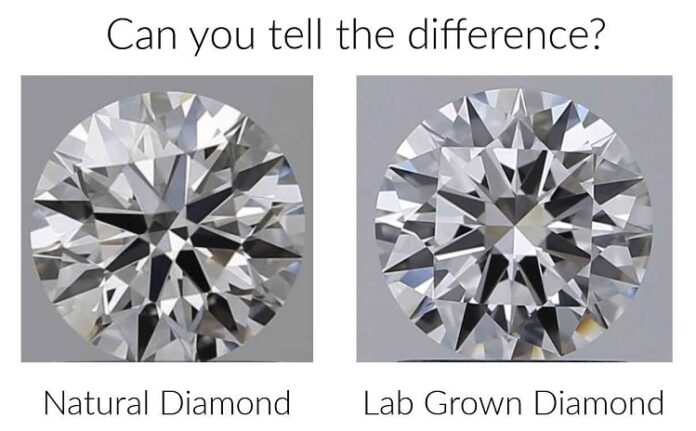The sheer brilliance of lab-grown diamonds is undeniable. Lab diamonds are no longer the underdog in the diamond industry. They are leading the charge to a whole new future of luxury where every home can afford to have its very own diamond but most of all, as other industries such as architecture start incorporating even more lab diamonds as part of their aesthetic constructions more and more people will be drawn to their beauty. By the end of this article, the reader will have discovered just how incredibly diverse lab diamonds can truly be and how they are used in multiple industries not just in fine jewelry but even as construction material and more.
Table of Contents
What Are Lab Diamonds?

Possessing the same optical, chemical, and physical characteristics lab or synthetic diamonds are real diamonds that are created in a laboratory. With the massive advancements in technology, through the of a growth chamber that sorta looks like a space capsule these thin-layer synthetic gem seed(s) will through complex processes that mimic the natural conditions from temperature to pressures and gases as their natural counterparts saving not only literal thousands of years but saves the local ecosystems, heavy fossil fuel usage, and local mining communities.
Best of all, these synthetic diamonds are not necessarily only used as an ethical and sustainable alternative to natural jewelry but as part of other materials in various industries such as architecture where the toughness, excellent heat conductivity, and various more are all used to create better and stronger buildings and even construction materials.
How are Synthetic Diamonds Used as Constructions Materials
Thanks to their very durable and hard bodies they are perfect as part of construction materials. These synthetic diamonds or their variant called Polycrystalline diamonds (PCD) are the perfect material for drills, inserts, cutters, or even as a coating. These are created through High-Pressure, High-Temperature (HPHT), or Chemical Vapor Deposition (CVD) and are engineered to have certain physical and chemical properties for industrial applications that require precision and efficiency.
For example:
- PCD because of its high thermal conductivity has a high tolerance to thermal shock even a low thermal expanse from PCD end mills, diamond drill bits, and PCD inserts, don’t forget, it’s a synthetic diamond that is made into a thin film that can make glass more scratch resistant, transparent, and thermal insulation.
The composition of PCD is more durable and much harder (5,000 kgf/mm2) against abrasion than conventional carbide tooling which when used in the correct applications, may reduce tooling costs quite significantly making them perfect CNC tasks as the particles from these synthetic diamonds can be used to increase the hardness, resistance, and overall strength of concrete to abrasion.
How are Synthetic Diamonds Used as Decorative Elements

Without a doubt, real or synthetic, diamonds have always been beautiful, and with the average price of 1 carat of loose diamonds hovering at just $1,800 to $12,000 and even cheaper for synthetic gems have brought architects and designers together wanting to embrace the concept of ethical luxury where opulence is married with ethical sustainability.
Thanks to their remarkable reflections of light, sparkle, and color. They can be found in gemstone tiles for the floor and walls containing other synthetic gemstones such as sapphire, ruby, quartz, or emerald. But best of all because of their thermal insulation properties, they are fantastic as partitions or skylights, allowing light to seep in without affecting the room’s temperature.
And though they are not as common and quite expensive. Certain companies make chandeliers that are paired with lighting elements adorned with synthetic diamonds giving the customer a truly unparalleled level of opulence and luxury. Of course, if the customer has an unlimited budget. Anything and everything is possible, especially with synthetic diamonds.
How are Synthetic Diamonds Used In Innovative Designs
Incorporating synthetic diamonds into architectural design isn’t just about luxurious aesthetics. Still, it is about creating an innovative design that transforms ordinary spaces into a truly unique atmosphere that leaves a lasting impression that exudes the grandeur of not just the diamonds themselves but of the owner as well.
With the work being resumed on the “Diamond Tower” or the Burj Almasa, it is rumoured that on one of its top floors. It will feature windows made from synthetic diamonds not only making it very tough against the elements of Jeddah, Saudi Arabia but almost from its local weather. Keeping the inside nice and cool. As technology continues to advance, the price of synthetic diamonds becomes even more affordable. More and more houses or buildings such as hotels will start adding more ornaments to their walls, ceilings, and floors that are either with a mix of lab diamonds.
But most of all, it’s not just architecture and fine jewelry that benefit from these precious gemstones but other industries as well. Here is just a short list of industries that are using synthetic diamonds to transform their fields:
- Fashion: from incredible embellishments to dresses to runway shows and beautiful red-carpet events.
- Art: some sculptures incorporate synthetic gemstones to proliferate the refractions and reflections of light in unique ways.
- Automotive: certain coatings that are lined with synthetic gemstones not only to increase their durability but to reduce friction and wear.
- Aerospace: the windows for both spacecraft and aeroplanes are being reinforced with synthetic gems to optimize hardness and optical quality.
- Alternative Energy: with the continued advancement of technology, synthetic diamonds are being used more and more to develop more green and durable technology.




